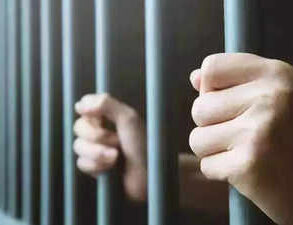After doing “Cabaret,” “Summer Stock,” “Gypsy” and “42nd Street” all in the past two seasons, you’d think the Goodspeed Opera House might have run out of backstage musicals they could breathe fresh life into. Happily, they’ve found “Dreamgirls” and have given this propulsive pop opera about the rise of a 1960s girl group a bright new perspective.
The 1981 Broadway success, with book and lyrics by Tom Eyen and music by Henry Krieger, runs through Dec. 30. It may not be a holiday show per se, but it’s so full of heartwarming, life-affirming moments that it would make a post-Christmas Ebenezer Scrooge blush.
“Dreamgirls” is always a high-energy endeavor, but some productions put too much of that energy into the many shouty arguments and not enough into the friendships and love relationships. Without reducing any of the conflict or suspense, director Lili-Anne Brown lessens the anger and ups the sisterhood. When things unravel for the Dreams and their tight-knit group of managers and fellow artists (some of whom are also their romantic partners), hope remains. Taking care to show some optimism amid the cascading turmoil of break-ups and self-destruction pretty much saves the show’s often disparaged second act. In this “Dreamgirls,” the dream is never allowed to die.
The musical opens with a neat illusion. A girl group in sparkly gowns and fashionable hairstyles enters to applause and fanfare, leading many in the theater audience to presume that these women are the stars of the show and applaud accordingly. Then three other women dash onstage, harried and out of breath from having run to the theater from a late train. (Goodspeed theatergoers who’d just been delayed by the closure of one lane of the bridge that brings you across the Connecticut River to the theater can sympathize. It’s a good idea to allow a little extra time for your trip to East Haddam these days while construction work continues.)
These interlopers are the Dreamettes, and a tardy train making them miss their assigned spot in a talent show isn’t their only obstacle. They notice that the group onstage has the same wigs that they do, so the Dreamettes turn theirs around for a different look. That moment of distinguishing themselves from the competition sums up the entire plot of the show. The Dreamettes aren’t just any old thing, they’re the next big thing.
The sensible and reserved Deena (Ta-Tynisa Wilson), amiable and accepting Lorrell (Keirsten Hodgens), outspokenly endearing Effie (Trejah Bostic) and Effie’s songwriting brother CC (Jos N. Banks) get tricked into taking on the morally compromised business-minded Curtis (Evan Tyrone Martin) as their manager. The Dreamettes become backup singers to the mercurial R&B star James Thunder Early (Mykal Kilgore). There are advantages to the arrangement, everybody’s hard work and big ideas pay off, and the background Dreamettes are transformed into the front-of-stage Dreams. Then a whole other round of troubles begins.
Just as the audience is deceived by who is the star in the show’s opening moments, the real star of the whole show turns out to be a Dream who is seen by some as secondary. Effie is relegated to singing behind the newly crowned frontwoman Deena, but her story of rebirth and renewal is far more important than Deena’s assured success. The make-or-break number for anyone playing Effie is, of course, the excoriating “And I Am Telling You I’m Not Going.” To her credit, Bostic makes sure her other solos like “I Am Changing” are just as strong or even stronger.

Diane Sobolewski
The supreme go-go dancing ensemble in “Dreamgirls” at the Goodspeed. (Courtesy Diane Sobolewski)
Compared to Effie, some characters are underwritten (or undersung), so director Brown heightens every possible interaction among them. When there’s a tantrum or breakdowns, there are onstage witnesses actively reacting. There’s a lot of furtive eye contact, especially among those who are suspected of cheating on their partners in love, business or otherwise. These connections are crucial in how this “Dreamgirls” plays so grandly and yet so naturally.
Behind all the nuanced flirting and positioning and backstabbing there is an 11-person ensemble handling dozens of small roles and dancing up a storm. Watching the whole cast suddenly doing the Frug is as spectacular as any of the more traditional Broadway-style choreography seen on the Goodspeed stage this season. They know how to go-go.
This production also nimbly deals with issues of body image by employing a physically diverse cast and an attitude that attractiveness doesn’t fit any one mold. This deepens the characters, who throughout the show are trying to make major changes in their lives and, in some cases, are changing their minds completely about who they can trust and why.
There’s more than emotional balance here. Kilgore, a bonafide recording artist in real life, willingly plays the clown so that there is an element of broad comedy alongside the internalized melodrama. There is a lot of out-and-out comedy here, whether it is from expertly intoned one-liners or a succession of outdated fashions and hairstyles.
Everyone sings well, and the supporting players and ensemble sing and dance better than you have any reason to expect. Given its initial success in the 1970s, not to mention its award-winning movie version, “Dreamgirls” hasn’t had a lot of major revivals, making this regional rendition particularly special. It’s not just The Dreams/Dreamettes who get to add expressive vocal tics to their performances. The performances are powerful enough that you accept Dreams songs and James Thunder Early songs as legit pop tunes rather than showtunes.
The orchestra doesn’t quite hit that same verisimilitude, though there is a sweet Barry White vibe to some of the arrangements as the show shifts from the 1960s into the ‘70s. One of the cooler aspects of “Dreamgirls” is that it is about the evolution of mainstream pop/soul/R&B and was first staged while those changes were still happening. Hearing and seeing it now, the show seems remarkably prescient and profound in how it separates sincerity from sensationalism in showbiz.
The film version redressed the balance a bit with its incessant changes of sets, fashions and hairstyles, but most stage productions of “Dreamgirls” behave more like a manic musical revue than a scriptbound musical theater play. That’s the show’s magic, that its plot erupts naturally from the songs, dances and physical interactions. There are no sets to speak of, just bright lights and curtains. Overall, its directness is much more successful and entertaining than recent overwritten bio-musicals like “Tina” and “Motown the Musical” which cover a lot of the same ground. The scenes get all their momentum from songs and dances, and dialogue bits are not allowed to slow the action down. Every song underscores what a character is feeling, whether it’s love or insecurity or self-deception.
For “Gypsy” and “42nd Street,” the staid old Goodspeed building was a character in the show, a venue from the same era that those shows were celebrating. For “Dreamgirls,” the opera house acts as a different kind of old theater, like the Apollo and other venues on the Black music circuit in the 1960s.
“Dreamgirls” is as much a Goodspeed show as any of the much older backstage musicals the theater loves. It works like a dream.
“Dreamgirls” runs through Dec. 30 at the Goodspeed Opera House, 6 Main St., East Haddam. Performances are Wednesdays at 2 and 7:30 p.m., Thursdays at 7:30 p.m., Fridays at 8 p.m., Saturdays at 3 and 8 p.m. and Sundays at 2 and 6:30 p.m. with added matinees on Dec. 14, 21 and 26. There are no Sunday evening shows on Dec. 17 or 24 and no performance on Dec. 25. $30-$82. goodspeed.org/shows/dreamgirls.
This post was originally published on this site be sure to check out more of their content.








